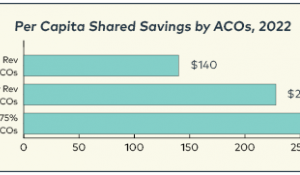Legislative and Regulatory Reform/ACA
The Affordable Care Act was a groundbreaking moment in regards to healthcare legislation reform. Its goal was to decrease overall healthcare expenditures as an insurance mandate required more people to be paying premiums, which helped offset the healthcare costs of the sicker population. In addition, middle class families were provided subsidies to purchase higher quality insurance. Those who chose not to purchase insurance were given a tax penalty, however this was repealed in 2019. Another important factor of the ACA was the creation of an insurance exchange; an online market allowing consumers to compare and purchase health insurance plans.
Since the ACA was passed, the healthcare landscape has changed significantly. A larger emphasis is now placed on quality and preventative care. While some of the regulations within the ACA are no longer in place, many states have taken note of the increased emphasis on primary/preventative care and made that a point of emphasis within their own healthcare plans. Several states have passed legislation, or are working towards legislation that reallocates healthcare spending to primary care, with the intention of providing higher quality care.
Resources

Agency for Healthcare Research & Quality (AHRQ) | Giugno 2011

The Commonwealth Fund | Gennaio 2013

The Henry J. Kaiser Family Foundation | Novembre 2012

Patient-Centered Primary Care Collaborative | Settembre 2012
- ‹ precedente
- 6 di 8
- seguente ›
News
Novembre 29, 2018 | Washington Post
Novembre 29, 2018 | Kaiser Health News
- ‹ precedente
- 6 di 36
- seguente ›
Events & Media
Ottobre 30, 2014 | Milbank Memorial Fund
Settembre 18, 2014 | National Quality Forum
Settembre 9, 2014 | Kaiser Family Foundation
- ‹ precedente
- 6 di 11
- seguente ›
Related Content
Pagine
| Titolo | Sorgente | Data |
|---|---|---|
| New Study Reveals Stalled Progress Toward Value-Based Care | Quest Diagnostics | Luglio 17, 2018 |
| Trump Officials Slash Grants That Help Consumers Get Obamacare Image | New York Times | Luglio 10, 2018 |
| Opportunities for Risk-Taking Primary Care Providers | NEJM Catalyst | Maggio 10, 2018 |
| Many health insurance plans not covering primary care until deductible is met | Wyoming Business Report | Maggio 2, 2018 |
| Why health care costs are making consumers more afraid of medical bills than an actual illness | Aprile 22, 2018 | |
| To Curb Rising Health Insurance Costs, Some States Try 'Reinsurance Pools' | Pew Charitable Trusts | Aprile 9, 2018 |
| Budget Bill Addresses Important Primary Care Priorities | AAFP News | Marzo 27, 2018 |
| Whitehouse, Cassidy Urge Azar to Focus on Reforming How Americans Pay for Health Care | Marzo 20, 2018 | |
| PCDC Advocates for Primary Care Before New York State Legislature | PCDC | Febbraio 12, 2018 |
| From Clinics to Child Insurance, Budget Deal Affects Health Care | Febbraio 8, 2018 |
Pagine
Associated Stakeholders:
Menu secondario
Copyright © 2024 Primary Care Collaborative

















